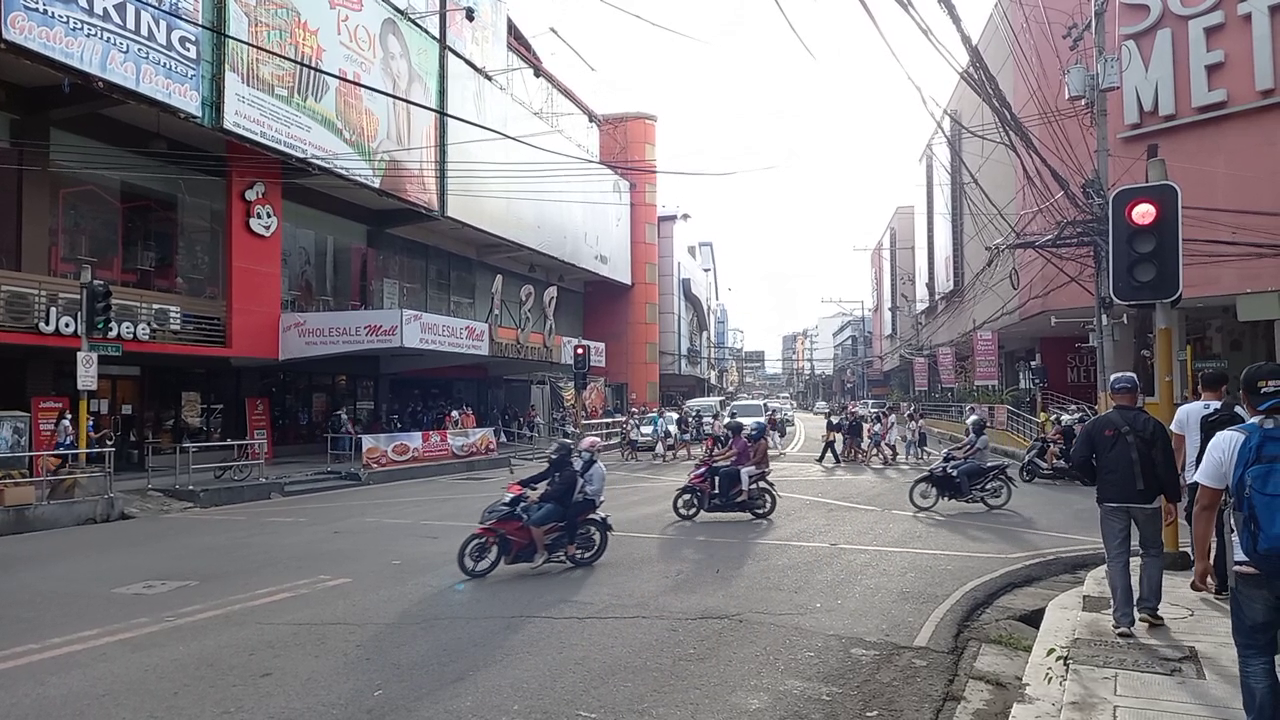
BUSTLING NO MORE Colon Street in downtown Cebu City, which used to bustle with activities, now has few people on Friday as the city government strictly enforces health protocols amid a new rise in COVID-19 cases. —DALE G. ISRAEL
CEBU CITY — The city government here has doubled the fine for health protocol violators amid a warning by a group of researchers that another surge of coronavirus cases could happen in Cebu if local authorities were not careful.
But while Cebu City was tightening enforcement gaps, Cebu Gov. Gwendolyn Garcia scoffed at the report of the Octa research group that the number of COVID-19 cases on the island were on the rise again and could lead to a fresh wave similar to last year’s.
“What is the cause for concern?” said Garcia who, at a press briefing on Friday, insisted that statistics had shown that the COVID-19 incidents in the province had a low mortality rate and a high percentage of recovery.
She also pointed out that the province only had 499 remaining active COVID-19 cases, a low number given its population of 3.2 million.
Garcia said her bigger concern was how to deal with the thousands of businesses that had been shut down by the pandemic.
“What is cause for concern is that when there will be too many people who will go hungry and when hunger goes to the head, criminality will rise, and we will have chaos on the streets. That’s my cause of concern,” she added.
Watch out
Experts from the Octa research group on Thursday said that Cebu province and the independent cities of Cebu, Mandaue and Lapu-Lapu could hit a total of 400 a day if local governments failed to contain the spread of the virus.
They said the last time Cebu was placed under enhanced community quarantine (ECQ), the island averaged 400 new cases per day.
“This number could be reached in two weeks if trends are not reversed. The concern right now is the possibility that the UK B117 variant is spreading in parts of Cebu,” they warned.
The experts, composed of professors from the University of the Philippines assisted by the University of Santo Tomas and Providence College in the United States, said Cebu has been averaging 147 cases a day over the past seven days, compared to the 11 cases per day during the period from Dec. 11 to Dec. 17, 2020.
Moving on
Cebu’s reproduction number, which is the average number of people one COVID-19 positive person can infect, is higher than the national average, the group noted, pointing out that the island is at 1.57 while the national average is at .96.
But Garcia said that all the required health protocols, such as maintaining hygiene and the wearing of face masks, face shields—were being strictly followed as the province reopened its businesses and tourism industry.
She said data from local health authorities also indicated that Cebu’s recovery rate was more than 90 percent while mortality rate was no more than 2 percent.
“Cebu is moving on and moving forward. We know that we are not living in a perfect world. There are diseases and there are diseases. We cannot even aspire for a zero COVID,” she said. “In Cebu, we will manage. We can manage. I trust our mayors, I trust our municipal health officers. I trust our city health officers, I trust my provincial health officer. We have come up with the program on how to deal with COVID-19.”
QUIET DAY Cebu City’s streets are quieter on Friday, with few commuters and pedestrians out on the road amid strict enforcement of health guidelines. —DALE G. ISRAEL
Staying vigilant
But in Cebu City, stiff penalties await people who would violate health protocols and the city’s curfew from 11 p.m. to 5 a.m.
Councilor Joel Garganera, who heads the city’s emergency operation center, said first time violators would now have to pay P1,000 instead of P500; with the fines going higher for repeat offenders.
The city also opened four barangay gymnasiums as holding areas for health protocol violators.
“Yes, our cases are rising but at the same time, all individuals in the positive line list are being attended to. They’re being extracted, isolated, and those exposed [to the virus] are being contact traced, swabbed. Households and establishments are also being placed on lockdown,” Garganera said on Friday.
While the city still has enough hospital rooms to accommodate COVID-19 patients, Garganera said they would not want it to reach a point similar to last year when both the public and private health-care system in the city were overwhelmed by virus patients.
He said their ultimate goal was to slow down the number of infections and this would require the cooperation of the public.
Cebu City was placed under ECQ, the strictest form of lockdown, in June last year due to a surge in COVID-19 cases. It took some two months before the city was downgraded to modified general community quarantine, the most relaxed form of community quarantine.
According to the Department of Health in Central Visayas, Cebu province recorded 7,744 COVID-19 cases since the pandemic broke out in March but only 614 remain active, with the death toll placed at 426.
Cebu City had 12,219 COVID-19 infections, with 1,150 still active. About 701 in the city died of the disease.
Mandaue City, which adjoins Cebu City, recorded 3,012 cases, of which 275 remained active, with 174 deaths.
Lapu-Lapu City, located on the tourist island of Mactan, reached 2,847 cases but only 148 were active as of Friday. The virus has claimed 122 lives in the city.